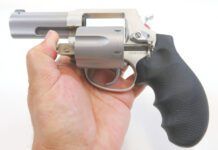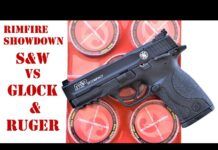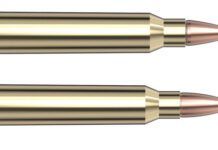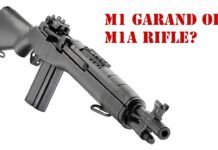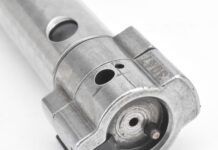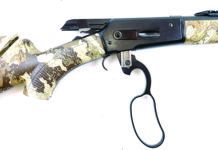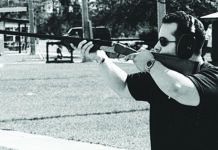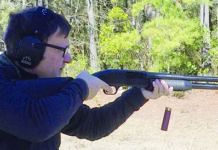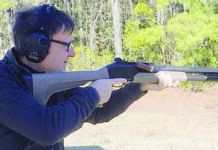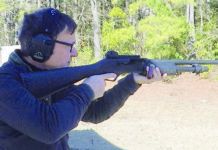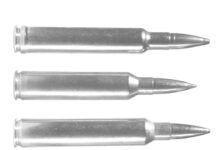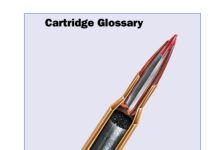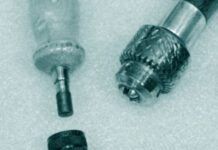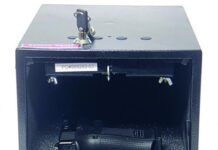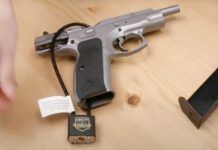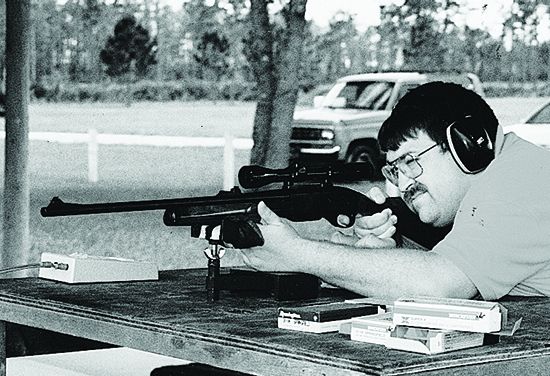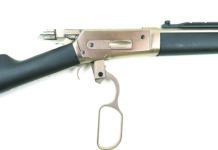In the December 1995 issue, we tested a pair of 30-06 hunting rifles, one of which had significant drawbacks, our shooters said. In this installment of Gun Tests Classics, we revisit the winner of that test, a Remington Model 7600 pumpgun, and see if its current used pricing makes it a still-valid recommendation for today’s shooters.
In the 1995 test, we fired a Browning Model 81 BLR and the Remington Model 7600 head to head, with an eye toward finding a fast-handling rifle in areas where the hunter might not get a clear shot at an animal that is longer than 50 or 60 yards. Both of the guns we bought were chambered for the 30-06 Springfield cartridge, which wasn’t widely chambered in lever-actions at the time, and there weren’t many pump-actions at all, so we tested them head to head.
The Browning Model 81 BLR was the loser in the test, mainly because we heard some binding and grinding in its rack-and-pinion gear about every 10 rounds. Also, due to the lever’s long 6.75-inch throw, our shooters occasionally short-stroked the lever. When this happened, the bolt wasn’t moved back far enough to pick up the next round in the magazine. Due to these problems with the action, we would not buy this lever-action rifle.
Remington Model 7600:
Worked Well, Hard Kicker

| Action Type | Slide |
|---|---|
| Finish | Blued |
| Weight (unloaded) | 7.5 lbs. |
| Overall Length | 42.5 in. |
| Barrel Length | 22.0 in. |
| Barrel Rifling | 1-in-10 RH |
| Sight Radius | 16 in. |
| Magazine Type | Detachable box |
| Magazine Capacity | 4 |
| Stock Composition | Walnut |
| Stock Length of Pull | 13.5 in. |
| Stock Drop at Comb | 1.9 in. |
| Stock Drop at Heel | 2.25 in. |
| Warranty | None Written |
To the best of our knowledge, the Remington Model 7600 is the only pump-action rifle made in high-power calibers. According to the manufacturer’s catalog, it is chambered for seven cartridges from 243 Winchester to 35 Whelen. In operation and appearance, the rifle is somewhat like the manufacturer’s Model 870 pump shotgun. This long gun features a free-floating barrel, dual action bars, and a detachable, box magazine.
Although a carbine version of this model with a 18.5-inch barrel was available in 30-06, we chose a full-size version with a 22-inch barrel in the same caliber for this test. This Remington’s steel barrel and receiver had an evenly polished and blued finish, while the alloy trigger guard was shiny black. However, we noted numerous tool marks on the interior of the receiver and the exterior of the bolt. Fitting of metal parts was average.
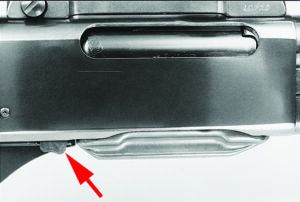
The two-piece stock was made of walnut with a glossy finish. We found two finished-over scratches on the underside of the buttstock, but the checkering on both sections of the stock was neatly cut. The shiny black-plastic buttplate, fore end cap, and grip cap were expertly fitted. There was a modest amount of side-to-side play in the fore end, though it didn’t impinge on the free-floating barrel, and a large gap at the back of the trigger guard to facilitate its removal. Otherwise, we thought wood-to-metal mating was very good.
Balancing at the front of the receiver, we considered the Model 7600 weight to be evenly distributed. Consequently, it shouldered and pointed well. However, despite the checkering on the buttplate’s face, the butt slipped around on the shoulder. Thanks to the raised comb, we were able to establish a stockweld with good cheek and jaw contact when using the open sights or a scope. Although the 1.25-inch-wide grip was a bit thin, it and the tapered (1.75-inch-wide in the middle) fore end afforded a solid grasp.
Call us wimps if you like, but we think this rifle kicked like a mule. Its hard buttplate slammed painfully into the shoulder. Even when we were wearing a PAST Mag Recoil Shield, which is normally very effective at reducing felt recoil, this 30-06 was uncomfortable to shoot.
Those who own a Remington Model 870 shotgun will feel right at home with the Model 7600’s controls. Depressing the action release, a lever at the left front of the trigger guard, unlocked the action when it was cocked. The magazine-release lever at the right front of the trigger guard freed the magazine when it was rocked forward. Located on the back of the trigger guard, the crossbolt safety blocked the trigger when it was pushed to the left. All three controls worked as they should.
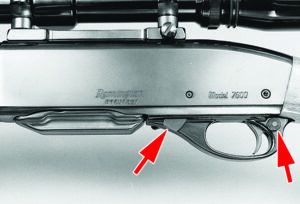
Functioning was absolutely reliable throughout the test. There was a small amount of drag in the action’s rearward movement, but its forward travel was smooth and easy. Filling the all-steel magazine to capacity required only a modest amount of effort, and it slid in and out of the magazine well readily. All of the ammunition we used extracted smoothly, and ejection was consistent.
Movement of the trigger, which had an ungrooved 1⁄4-inch-wide face, was average. The pull had a 1⁄16-inch of slack and a somewhat mushy release. According to our self-recording trigger gauge, it released at 3.5 pounds.
The Model 7600 was equipped with the manufacturer’s standard open sights. The front blade had a white bead on the top and was dovetailed to a grooved 3⁄8-inch-tall ramp. The rear featured a fully adjustable blade with a U-shaped notch on a ramped base that had uncolored windage and elevation index marks. This set up worked satisfactorily at short and medium ranges, but we used a Burris Fullfield 3-9x scope for record firing.
Overall, this Remington’s accuracy was average. Federal 150-grain Hi-Shok soft points achieved three-shot groups averaging 2.10 inches at 100 yards, while Remington 125-grain pointed soft points were good for 2.25-inch groups. With Winchester 165-grain pointed soft points, groups opened up to 3.20 inches. Despite having the same barrel length, this 30-06 yielded average velocities that were around 46 fps slower than those of the Browning BLR.
Bottom Line: This Remington Model 7600 handled, functioned and performed well enough to earn our recommendation. However, we think the buttplate should be replaced with something a lot more user friendly.
The Blue Book of Gun Values has the blued-and-walnut Remington Model 7600 for $710 in 100% condition, $550 for 98% condition, and $450 in 95% condition. The Standard Catalog of Firearms lists this one for $750 in New In Box shape, $600 in Excellent condition, and $500 in Very Good condition. For a short-range deer or hog gun, we wouldn’t want to go much higher than $500 for a 7600.
Adapted by Gun Tests Staff, using evaluations from Gun Tests Team members. GT


